#trappist-system
Explore tagged Tumblr posts
Text
A Sans Trio x Alien Reader
A silly little story Idea I'm gonna write. (Yes, I know, another story. Someone hold me back /j)
After the world begun to push for space travel, the Ebott Aeronautics and Space Administration (EASA) broke the laws of physics and created a particular space craft that could travel at the speed of light.
After a couple years of careful consideration, they decided that a select 100 people- humans and monsters alike- would be travelling on said spacecraft to the "Trappist System" 39 light years away. They're placed in these stasis pods, and then sent to the main planet they believe will be hospitable.
Trappist 1e.
However, once they get there, they realise that Humans and Monsters aren't the only intelligent life out there- and certainly not the largest, or strongest.
Featuring: Underfell Sans (Red), Horrortale Sans (Axe), and Undertale Sans.
( The Alien Species I created will be shown under the cut )
Trappistarian live on Trappist 1e, and change in appearance depending on which side they live on.
(Trappist 1e is tidally locked, meaning one side is constantly facing the sun, and the other is constantly facing the dark.)

Goldilocks live on the small, "middle" area between the dark and the light- a very temperate area that would be perfect for human life.
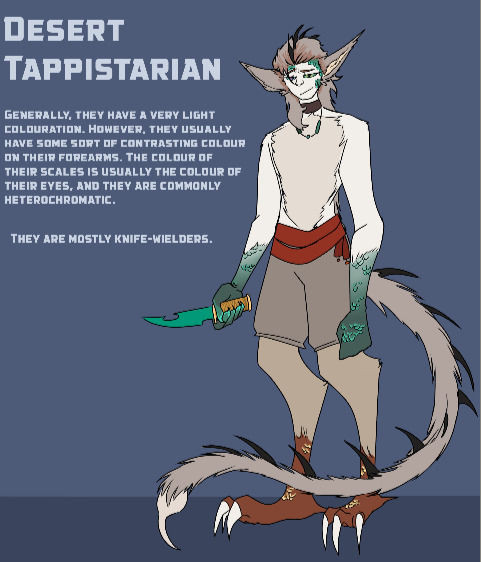
They live on the "Day" side of Trappist 1e.

And these guys live on the dark side.
All Trappistarian are capable of being in the other's territory for varying times.
Their average heights are 10'3" and above.
#sans x reader#underfell sans#underfell sans x reader#red x reader#axe x reader#horrortale sans#horrortale sans x reader#undertale fanfic#undertale fandom#undertale fanfiction#aliens#alien species#Trappist System#sci fi
40 notes
·
View notes
Text
A really interesting thing about being no longer christian fundie is that now I can actually learn basic astronomy and now when I listen to scifi I am finding that a lot of planets and stars and stuff mentioned are real?????
#like wolf 359 and the trappist system and andromeda being a galaxy and that a solar system is not a galaxy#christianity tw#ask to tag'
3 notes
·
View notes
Text
dungey cycle 2: 2 fast 2 furious
#i’m doing fucked up things to the trappist system rn#this is so fun i’m just drawing pictures and pretending it’s physics#this must be how those dudes back in the 60’s felt
0 notes
Text
The stability of the TRAPPIST-1 system is the result of a more unstable past. Scientists may have finally revealed the history of the tantalizing TRAPPIST-1 system, an intricate collection of seven worlds that sit about 40 light-years away from us. These worlds, many astronomers and astrobiologists say, may offer us a promising chance of finding life outside the solar system — but they also exhibit peculiar orbital patterns. The newly outlined history of TRAPPIST-1 may, at last, explain how those patterns came to be. When planets form around a young star, their orbital periods often enter "resonances" with each other. An everyday example of a resonance has to do with pushing someone on a playground swing — if you time the push to coincide with the natural frequency of the swing, such as when the swing is just about to go back down, your push would amplify the size of the swing's arc. Similarly, planets often find themselves in resonances with each other. For example, an inner planet can orbit exactly twice for every one orbit of an outer planet. This is a 2:1 resonance, and like pushing a child on a swing amplifies how fast they swing, the exchange of gravitational energy between resonant planets usually makes their orbits unstable, amplifying orbital periods until the planets eventually move out of resonance with one another. Another common planetary resonance is 3:2.
0 notes
Text
I love these so much fr
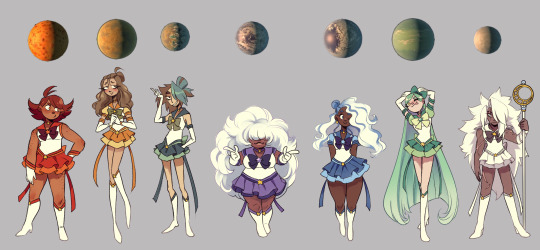
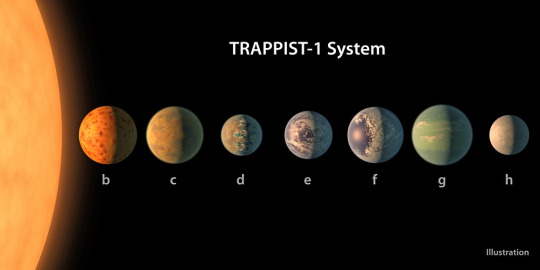
I designed Sailor Senshi for the Trappist-1 system! I know they should have their own unique uniform, but I just felt like drawing the standard Solar System one
701 notes
·
View notes
Text
[ All Aliens Report To Kentucky ]
#wauln#fight night champion#extraterrestrial#kentucky#lexington#tourism#horses#bourbon#dopamine#intergalactic#Trappist 1#solar system#light years
0 notes
Text
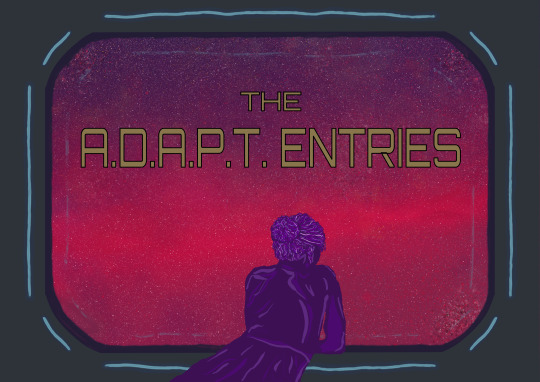
The A.D.A.P.T. Entries is an episodic game in 12 parts from @staradavid. Equal parts interactive fiction and narrative adventure, what will ensue is a space thriller about Judiasm, the building and falling of communities, the necessity of resisting dehumanization, and how even the best of intentions can be twisted in the face of systemic corruption and unaddressed prejudices. The first entry will release January 30th, with the consecutive entries releasing on the last Thursday of each month in 2025.
The A.D.A.P.T. Entries follow Rivkah Kadish, a Jewish woman born in what was once west Montreal but raised on The Ostera, the final flagship on the AQA Inaugural Expansion fleet making a forty year journey to the TRAPPIST-1 system. As the ship’s path nears it’s end, join her as she explores her upbringing, falling in love, the less-than-savoury choices she’s had to make as a member of AQA’s adaptation team, and the secrets she’s uncovered over the years. It will be found at staradavid.itch.io, and updates can also be found at staradavid.bsky.social and adapt-aqa.bsky.social.
The past year of my life has been spent planning, researching, and beginning to develop this project, and I'm so excited to start sharing these stories with the world, in whatever forms that may take.
#s.txt#indie games#indiedev#gamedev#interactive fiction#narrative game#jewish#jumblr#<- tagging to get eyes on it sorry sjdhska#queer artist#queer games#yall i truly can't explain how much energy has been poured into this project and other parts of this story#it feels like the most important thing i've ever made#and the most important to ME#so please hype it up if you can#stara makes stuff
82 notes
·
View notes
Text
DID LIFE BEGIN IN DEEP SPACE??
Blog#468
Saturday, January 4th, 2025.
Welcome back,
Life, for all its complexities, has a simple commonality: It spreads. Plants, animals and bacteria have colonized almost every nook and cranny of our world.
But why stop there? Some scientists speculate that biological matter may have proliferated across the cosmos itself, transported from planet to planet on wayward lumps of rock and ice. This idea is known as panspermia, and it carries a profound implication: Life on Earth may not have originated on our planet.
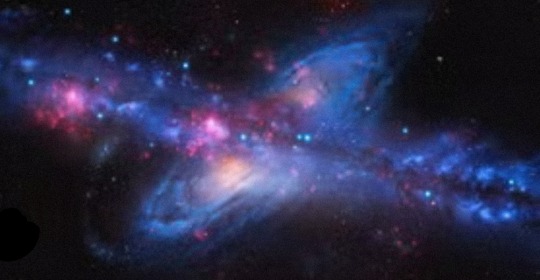
In theory, panspermia is fairly simple. Astronomers know that impacts from comets or asteroids on planets will sometimes eject debris with enough force to catapult rocks into space. Some of those space rocks will, in turn, crash into other worlds. A few rare meteorites on Earth are known to have come from Mars, likely in this fashion.
“You can imagine small astronauts sitting inside this rock, surviving the journey,” says Avi Loeb, an astrophysicist at Harvard University and director of the school’s Institute for Theory and Computation. “Microbes could potentially move from one planet to another, from Mars to Earth, from Earth to Venus.”

(You may recognize Loeb’s name from his recent book Extraterrestrial: The First Sign of Intelligent Life Beyond Earth, which garnered headlines and criticism from astronomers for its claim that our solar system was recently visited by extraterrestrials.)
Loeb has authored a number of papers probing the mechanics of panspermia, looking at, among other things, how the size and speed of space objects might affect their likelihood of transferring life. While Loeb still thinks it’s more likely that life originated on Earth, he says his work has failed to rule out the possibility that it came from somewhere else in space.

Meanwhile, recent experiments have suggested that earthly organisms can survive in space, at least for a little while. Experiments aboard the EXPOSE-E facility at the International Space Station have subjected bacteria, lichens and plant seeds to the extreme cold and radiation of space for anywhere from a few days to over a year. Some bacteria and other organisms were able to survive the journey, including tardigrades, ultra-hardy animals found everywhere from Arctic ice to the deep ocean.
If an asteroid or comet is large enough, microbes could be frozen deep within, Loeb says.

That could protect them from radiation and the extreme temperatures that turn meteors into fireballs. After they explode onto the surface of a new world, these extraterrestrial colonists could begin to thrive.
In other solar systems, panspermia could be even more likely to occur than in our own. For example, the seven tightly packed planets of the TRAPPIST-1 system, discovered in 2016, might be ideal for life to planet-hop. If we find life there one day, Loeb says, we should pay attention to whether it all looks suspiciously similar. He thinks two neighboring planets with similar biological systems would be a sure sign that life had traveled between them at some point.
Originally published on https://www.astronomy.com
COMING UP!!
(Wednesday, January 8th, 2025)
"DID LIFE CAME FROM STARS??"
#astronomy#outer space#alternate universe#astrophysics#universe#spacecraft#white universe#space#parallel universe#astrophotography
64 notes
·
View notes
Text
Wikipedia Links:
https://en.wikipedia.org/wiki/Pioneer_11
https://en.wikipedia.org/wiki/International_Space_Station
https://en.wikipedia.org/wiki/Moon
https://en.wikipedia.org/wiki/51_Pegasi_b
https://en.wikipedia.org/wiki/TRAPPIST-1
https://en.wikipedia.org/wiki/Tarantula_Nebula
26 notes
·
View notes
Text
Stares at The Depth of Love.
Okay but consider what if on one area of the planet I gave them absolutely massive waves. Like solid sky-high waves?
Because the area there is only like a foot or so deep so absolutely gigantic waves form there at a certain time of year.
4 notes
·
View notes
Text
Since its launch in late 2021, NASA's James Webb Space Telescope has raised the possibility that we could detect signs of life on exoplanets, or planets outside our solar system. Top candidates in this search are rocky, rather than gaseous, planets orbiting low-mass stars called M-dwarfs—easily the most common stars in the universe. One nearby M-dwarf is TRAPPIST-1, a star about 40 light years away that hosts a system of orbiting planets under intense scrutiny in the search for life on planets orbiting stars other than the sun.
Continue Reading.
67 notes
·
View notes
Text
i think i’m going to do an exoplanets thing 😮😮😮
1 note
·
View note
Text
Sometimes I forget that not everyone is as obsessed with astronomy as me and haven’t even heard of things like neutron stars or the Trappist 1 solar system or like, the dragonfly mission. It’s very weird to think about.
Anyway, I was thinking about one of my favorite astronomy facts, and it occurred to me that a lot of the general public have no idea that it exists.
The Pale Blue Dot.

(Picture from NASA.gov)
This is a picture taken by the Voyager 1 spacecraft on February 14, 1990. In it, you can see a small dot within the orange-ish stripe. That dot is Earth. This picture was taken 3.7 billion miles (6 billion kilometers) away from the sun, and it shows just how small we are.
I genuinely think that this is possibly the most beautiful picture ever taken. I’ve probably cried while looking at it before:/
21 notes
·
View notes
Text

Hey There! I realized I hadn’t done a proper introduction, so here I am!
I am Trappist-1-F! A tidally locked planet in the Trappist-1 system located within the constellation Aquarius, about 40 light years from earth, within the habitable zone of my system!
I go by He/Him, I am Bisexual, and I do apologize for the prolonged eye contact. Due to myself being tidally locked, I physically cannot blink and have to always be staring at the nearest stellar body, or at least whoever I’m talking to. Oh I can also do this neat thing where I shoot out a big beam, it’s not that powerful, in fact it’s quite ineffective, but still neat nonetheless.
I am ever so glad to be here and I cannot wait to meet everyone else!
Tag List:
@dumb-but-happy @apprentice-sharkface @angelicassassinations @likeem-apples @firjrkemrneejcje @theetherealraphael @augmentedchordsofficial @still-sleep-deprived-scissors @ms-macintosh @not-decided-star @neoninglitchen @heiskelcrinomicon @askmistaketalesurgesans @jaydove-writes @iridescentmothgirl @astra-oc @in-real-life-moon @cado-thingy @sentientballofpeas @stargazing-with-friends @akitheastralwalker @marbledew @mersinia @the-official-goose-god @crystalsandbubbletea @enemylv1 @sironion @bored-dromaeosaur @the-very-unofficial-ussr @korithefox @alhena-gemini @mystic-mae @slugthatscreatures @eldritchdemonfox @canisnebular @justacrispyrat @stargazer365 @the-rat-1 @soulful-rodent @the-dust-among-the-stars @teddyandmochi @totally-manila-philippines @xyzee1212 @actual-europa-clipper @europa-official @pennyroyald @half-eaten-baguetteee @err0r-404notfound @hungry-hungry-blackhole
@nontheanon
17 notes
·
View notes
Text
DID LIFE BEGIN IN SPACE??
Blog#449
Wednesday, October 30th, 2024.
Welcome back,
Life, for all its complexities, has a simple commonality: It spreads. Plants, animals and bacteria have colonized almost every nook and cranny of our world.
But why stop there? Some scientists speculate that biological matter may have proliferated across the cosmos itself, transported from planet to planet on wayward lumps of rock and ice. This idea is known as panspermia, and it carries a profound implication: Life on Earth may not have originated on our planet.
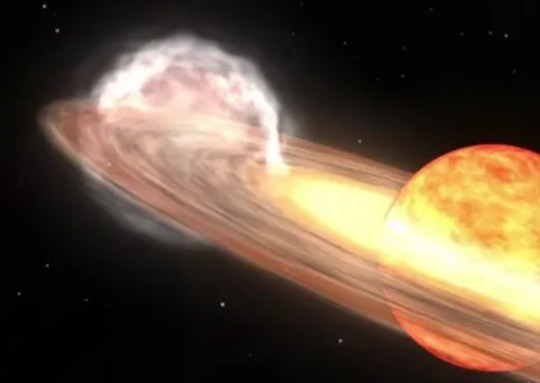
In theory, panspermia is fairly simple. Astronomers know that impacts from comets or asteroids on planets will sometimes eject debris with enough force to catapult rocks into space. Some of those space rocks will, in turn, crash into other worlds. A few rare meteorites on Earth are known to have come from Mars, likely in this fashion.
“You can imagine small astronauts sitting inside this rock, surviving the journey,” says Avi Loeb, an astrophysicist at Harvard University and director of the school’s Institute for Theory and Computation. “Microbes could potentially move from one planet to another, from Mars to Earth, from Earth to Venus.”

(You may recognize Loeb’s name from his recent book Extraterrestrial: The First Sign of Intelligent Life Beyond Earth, which garnered headlines and criticism from astronomers for its claim that our solar system was recently visited by extraterrestrials.)
Loeb has authored a number of papers probing the mechanics of panspermia, looking at, among other things, how the size and speed of space objects might affect their likelihood of transferring life.

While Loeb still thinks it’s more likely that life originated on Earth, he says his work has failed to rule out the possibility that it came from somewhere else in space.
Meanwhile, recent experiments have suggested that earthly organisms can survive in space, at least for a little while. Experiments aboard the EXPOSE-E facility at the International Space Station have subjected bacteria, lichens and plant seeds to the extreme cold and radiation of space for anywhere from a few days to over a year. Some bacteria and other organisms were able to survive the journey, including tardigrades, ultra-hardy animals found everywhere from Arctic ice to the deep ocean.
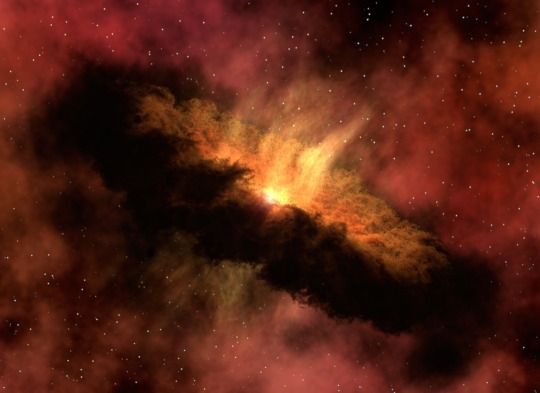
If an asteroid or comet is large enough, microbes could be frozen deep within, Loeb says. That could protect them from radiation and the extreme temperatures that turn meteors into fireballs. After they explode onto the surface of a new world, these extraterrestrial colonists could begin to thrive.
In other solar systems, panspermia could be even more likely to occur than in our own. For example, the seven tightly packed planets of the TRAPPIST-1 system, discovered in 2016, might be ideal for life to planet-hop.
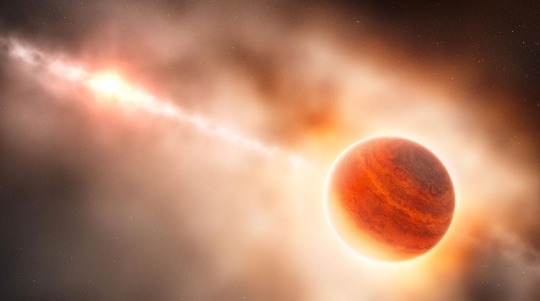
If we find life there one day, Loeb says, we should pay attention to whether it all looks suspiciously similar. He thinks two neighboring planets with similar biological systems would be a sure sign that life had traveled between them at some point.
Loeb also hypothesizes that panspermia could occur even between distant star systems. Interstellar visitors, like the recently observed space object ‘Oumuamua and the comet Borisov, could spread life from system to system.

Such a process could even begin on our own planet. In a paper published in the journal Life, Loeb looked at the possibility that asteroids or comets might graze the Earth’s atmosphere, dozens of miles above the surface, picking up microorganisms floating high in the sky, before heading out on interstellar journeys. He estimates that, though rare, a few such instances have likely occurred during Earth’s lifetime.
Even if an asteroid flyby did pick up a few microbes from Earth, it’s highly unlikely that they would survive the journey, much less land on another planet with conditions similar to ours. But, then again, we can’t necessarily rule it out.
Originally published on https://www.astronomy.com
COMING UP!!
(Saturday, November 2nd, 2024)
"DID TIME OR SPACE EXIST FIRST??"
#astronomy#outer space#alternate universe#astrophysics#universe#spacecraft#white universe#space#parallel universe#astrophotography
48 notes
·
View notes
Text
Unusual associations tag
Thanks for the tag @faeriecinna @rickie-the-storyteller
Time to reveal Oleander:
Seasoning- Mint
Weather- Spring rainfall. Can be a gentle shower, can be a monsoon
Color-Scarlet
Sky- A clear red sunrise or sunset
Magic power- Pacify, call to arms, throw voice
Plant- Honeysuckle
Weapon- speech, knowledge
Social media- Twitter, TikTok
Candy- Nut brittle
Fear- Irrelevancy, failure, destruction of home
Method of long distance travel- Foot
Art style- Celtic knot-work and art nouveau
Stationary- Parchment
Celestial body- Trappist 1 system
Tagging @daisywords @pippinoftheshire @oh-no-another-idea @indecentpause @kaylinalexanderbooks
@somethingclevermahogony @vesanal @the-letterbox-archives @riveriafalll @finickyfelix and open tag
#tag game#open tag#writing#creative writing#writer#writers#writers and poets#writing community#writer on tumblr#writeblr#unusual associations tag#my ocs
9 notes
·
View notes